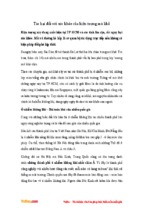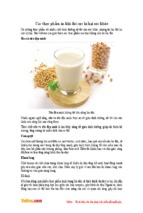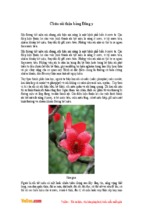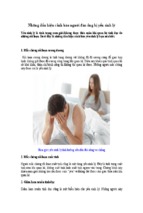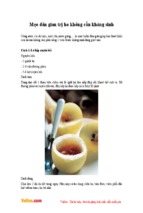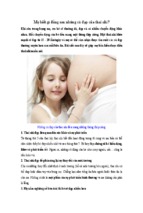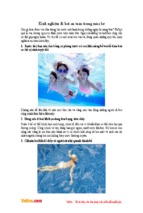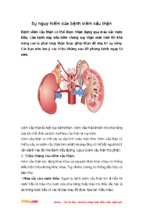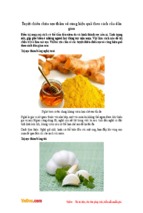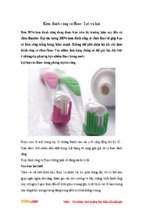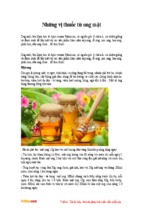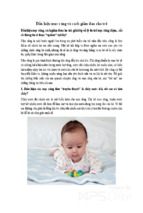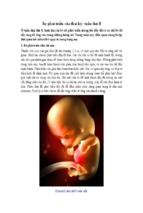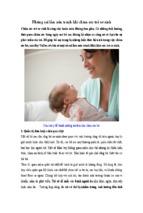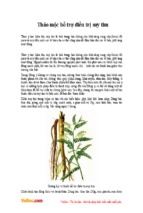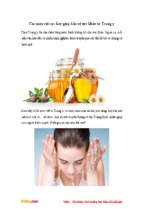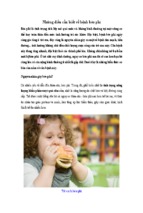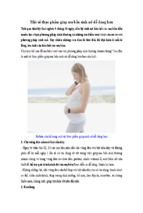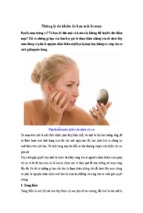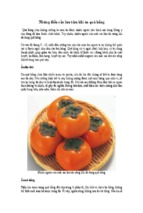Xijun Yan Editor
Dan Shen
(Salvia miltiorrhiza)
in Medicine
Volume 1. Biology and Chemistry
Dan Shen (Salvia miltiorrhiza)
in Medicine
Xijun Yan
Editor
Dan Shen (Salvia
miltiorrhiza) in Medicine
Volume 1. Biology and Chemistry
123
Editor
Xijun Yan
Tianjin
China
ISBN 978-94-017-9468-8
DOI 10.1007/978-94-017-9469-5
ISBN 978-94-017-9469-5
(eBook)
Springer Dordrecht Heidelberg New York London
Library of Congress Control Number: 2014950646
© Springer Science+Business Media Dordrecht and People’s Medical Publishing House 2015
This work is subject to copyright. All rights are reserved by the Publishers, whether the whole
or part of the material is concerned, specifically the rights of translation, reprinting, reuse of
illustrations, recitation, broadcasting, reproduction on microfilms or in any other physical way,
and transmission or information storage and retrieval, electronic adaptation, computer software,
or by similar or dissimilar methodology now known or hereafter developed. Exempted from this
legal reservation are brief excerpts in connection with reviews or scholarly analysis or material
supplied specifically for the purpose of being entered and executed on a computer system, for
exclusive use by the purchaser of the work. Duplication of this publication or parts thereof is
permitted only under the provisions of the Copyright Law of the Publishers’ locations, in its
current version, and permission for use must always be obtained from Springer. Permissions for
use may be obtained through RightsLink at the Copyright Clearance Center. Violations are
liable to prosecution under the respective Copyright Law.
The use of general descriptive names, registered names, trademarks, service marks, etc. in this
publication does not imply, even in the absence of a specific statement, that such names are
exempt from the relevant protective laws and regulations and therefore free for general use.
While the advice and information in this book are believed to be true and accurate at the date of
publication, neither the authors nor the editors nor the publishers can accept any legal
responsibility for any errors or omissions that may be made. The publishers make no warranty,
express or implied, with respect to the material contained herein.
Printed on acid-free paper
Springer is part of Springer Science+Business Media (www.springer.com)
Preface to Dan Shen (Salvia miltiorrhiza)
in Medicine
In the 2008 press conference on the publication of the Chinese edition of the
Dan Shen (Salvia miltiorrhiza) in Medicine, several volume editors suggested that the book should be translated into English and distributed internationally. They all believed that the medical communities are enthusiastic
about TCM research, and that among the studies on single herbs, the study
of Danshen has taken the lead. Therefore, it was a worthy undertaking
to introduce the study conducted by the Chinese people over the past
1,000 years, and especially in the past 30 years, to the world. Meanwhile,
I was asked unanimously to be its editor-in-chief. After several years of hard
work by nearly 100 professors and research scientists, the translation is
finally complete.
The English edition of Dan Shen (Salvia miltiorrhiza) in Medicine is
based on its Chinese edition. Modifications include changing the five-volume
format to one volume and deleting some duplicated portions in the Chinese
edition. Since the chapters in each volume of the Chinese edition were
written by many individuals, details such as biological properties and ancient
literature reviews were repeated many times, and the duplications were
deleted in the English edition. Also, the various names of Danshen were
unified. The appendix in the fifth volume, the prescriptions or formulas in
ancient China, and the chapter on information management in the fourth
volume were also deleted. The introduction to the production region, common names, and phytochemical components had appeared in the first three
volumes, while this time only their first appearance was preserved. Some
typos and oversights were corrected after consulting with volume editors.
New progress in Danshen research was included in this book, such as the
development of Salvianolate Lyophilized Injection, which finally came on
the market in 2011 after 8 years of strict examination, and it was a landmark
event in the development of TCM injections. It is unfortunate that we could
not include the data on Qishenyiqi Dripping Pills, as the papers have not been
published yet. The drug, developed by academician Boli Zhang, passed
large-scale, evidence-based medicine clinical research trials in 2010, the first
for a TCM drug, and won the 2011 National Science and Technology Progress Award.
In principle, the English edition of Dan Shen (Salvia miltiorrhiza) in
Medicine is the translation of the Chinese edition, thus preserving the latter’s
framework. Because the Chinese edition was written by more than 100
v
vi
Preface to Dan Shen (Salvia miltiorrhiza) in Medicine
scholars and published in five volumes, the styles and layouts were not
identical. For example, some references were listed at the end of the chapter,
while some were listed at the end of the section. The English edition did not
change the style.
Dan Shen (Salvia miltiorrhiza) in Medicine has amassed Danshen
research results since the times of ancient China—it is not only a magnificent
historical scroll, but also a huge work which shines the light of modern
science and technology.
I sincerely thank academicians Yongyan Wang and Boli Zhang. They
have given me so much substantive guidance and encouragement despite
their busy schedules. Without their help, it would have been impossible to
finish the work. I also want to thank every author and volume editor who has
participated in the writing and editing of both editions of this book; they have
solved various problems which arose during the writing and translating
processes. Last but not least, I want to thank the comrades working in the
office of Dan Shen (Salvia miltiorrhiza) in Medicine, who have worked
patiently and diligently over the past 15 years, collecting and organizing data
and information.
The publication of the English edition of Dan Shen (Salvia miltiorrhiza)
in Medicine is a testimony of our sincere desire for the communication and
discussion of TCM among international communities. We earnestly welcome
suggestions and criticism from our colleagues around the world.
Xijun Yan
Preface to Volume 1. Biology
and Chemistry
“Botany of Danshen” systematically introduces the research on and the
resource survey for Danshen (Salvia miltiorrhiza). It also describes Danshen’s pharmaceutical and biological characteristics, its identification, distribution and ecological environment, and its planting, in vitro cultivation,
and genetic breeding. The content of Part I is based on a large amount of
literature research. More importantly, many authors of this section are those
who conducted this original research. For example, most of the content from
Chaps. 3 to 6 is based on firsthand data; it represents not only the latest
research results on Danshen, but also the theoretical foundation for further
research.
It is worth pointing out that the writing of this part has received support
from Tianjin Tasly Group and from a project sponsored by the National
High-tech development Program (“863 program”). Special thanks!
Since Danshen is currently a hot topic in Chinese medicinal research, it is
sure that more and more research data will be released, and that this part will
have room for improvement. We welcome any criticism or comments.
February 2008
Luqi Huang
vii
Editing Committee
Chief Editor
Xijun Yan
Chief Reviewers
Yongyan Wang
Boli Zhang
Associate Chief Editors
Naifeng Wu
Guoguang Zhu
Luqi Huang
Lianniang Li
Houwei Luo
Juntian Zhang
Guanhua Du
Dean Guo
Yiyu Cheng
Xuewen Zhang
Xinde Shi
Zhengliang Ye
Yonghong Zhu
Shuiping Zhou
Hanxi Xue
Editing Office
Director
Renshu Li
Members
Yonghong Zhu
Zhengliang Ye
Hanxi Xue
Ying Zhao
ix
x
Volume 1. Biology and Chemistry
Chief Editors
Luqi Huang
Lianniang Li
Houwei Luo
Associate Chief Editors
Deyou Qiu
Zongsuo Liang
Min Chen
Editors
Xuefeng Feng
Wenting Liu
Xirong He
Jingyuan Song
Deyou Qiu
Min Chen
Jinda Hao
Lanping Guo
Guanghon Cui
Zongsuo Liang
Luqi Huang
Houwei Luo
Lianniang Li
Volume 2. Pharmacology and Quality Control
Chief Editors
Juntian Zhang
Guanhua Du
Dean Guo
Associate Chief Editors
Xiumei Gao
Shen Ji
Ming Zhu
Rongxia Liu
Haibin Qu
Editors
Lianhua Fang
Yitao Wang
Editing Committee
Editing Committee
xi
Xiaoying Wang
Yuehua Wang
Dongxia Wang
Xiaoming Wang
Yi Wang
Jinhua Wang
Jie Wang
Xiaoying Wang
Hongmei Guang
Changsuo Liu
Ailin Liu
Yan Sun
Yonghong Zhu
Jinglan Xu
Guorong He
Xiuying Yang
Danshen Zhang
Tiantai Zhang
Ran Zhang
Juntian Zhang
Li Zhang
Lihua Zhang
Bin Zhang
Chuan Li
Guanhua Du
Rong Du
Ping Chen
Yonghong Chen
Xiuping Chen
Ji Chen
Shuiping Zhou
Zhiwei Qu
Xiaoming Zhu
Zhihao Jiang
Minke Tang
Zhiwen Li
Zhixin Guo
Xiumei Gao
Mei Gao
Hongcai Shang
Xinrui Cheng
Guangliang Han
Jingyan Han
Yanqiao Zang
Ying Dai
Linke Ma
Hongzhi Wang
xii
Junquan Wang
Yi Wang
Zhun Feng
Zhengliang Ye
Yonghui Liu
Yan Liu
Rongxia Liu
Shunhang Liu
Aihua Liu
Xuesong Liu
Jianghao Sun
Guoqing Wu
Ling Tong
Yongjiang Wu
Wanying Wu
Xiaoqian Zhang
Xuemin Zhang
Jinlan Zhang
Xian Zhang
Yunfei Li
Manling Li
Min Yang
Yuewu Yang
Bilian Chen
Shen Ji
Jianping Lin
Dean Guo
Guoqiang Fan
Xiaohui Fan
Qiang Zheng
Zhangzhao Jin
Ming Zhu
Jun Gao
Hongfang Cui
Fenglan Cao
Rixin Liang
Shunnan Zhang
Qing Gong
Haiou Dong
Jianping Han
Haibin Qu
Volume 3. Clinical Research
Chief Editors
Guoguang Zhu
Xuewen Zhang
Editing Committee
Editing Committee
xiii
Xinde Shi
Associate Chief Editors
Yi Zheng
Ruizhi Luo
Naifeng Wu
Editors
Xinde Shi
Yan Liu
Jinping Liu
Jia Liu
Yonghong Zhu
Danyong Wu
Naifeng Wu
Xuewen Zhang
Renshu Li
Ruizhi Luo
Yi Zheng
Guoguang Zhu
Jingsheng Zhao
Ying Zhao
Jiaoli Guo
Shunnan Zhang
Keqin Han
Contents
1
2
3
Materia Medica and Plant Resource . . . . . . . . .
Jinda Hao, Xirong He, Luqi Huang and Min Chen
1.1 Nomenclature . . . . . . . . . . . . . . . . . . . . . .
1.1.1 Common Name. . . . . . . . . . . . . . . .
1.1.2 Names in Literature [3] . . . . . . . . . .
1.1.3 Names in Different Regions [3]. . . . .
1.1.4 Commercial Names [3] . . . . . . . . . .
1.1.5 Prescription Names [3]. . . . . . . . . . .
1.2 Etymology . . . . . . . . . . . . . . . . . . . . . . . .
1.3 Materia Medica Studies . . . . . . . . . . . . . . .
1.4 Resource Survey . . . . . . . . . . . . . . . . . . . .
1.4.1 Local Varieties and Original Plant
of Danshen [6] . . . . . . . . . . . . . . . .
1.4.2 Species Confused with Danshen [6]. .
References . . . . . . . . . . . . . . . . . . . . . . . . . . . .
.........
1
.
.
.
.
.
.
.
.
.
.
.
.
.
.
.
.
.
.
1
1
1
1
2
2
2
2
3
.........
.........
.........
4
8
10
............
11
.
.
.
.
.
.
.
.
.
.
.
.
.
.
.
.
.
.
.
.
.
.
11
11
12
12
12
12
12
13
13
15
18
.............
19
.............
.............
.............
19
19
24
Distribution and Habitat of Danshen. . . . . .
Luqi Huang, Min Chen and Lanping Guo
2.1 Geographic Distribution . . . . . . . . . . . .
2.2 Ecological and Biological Characteristics
2.3 Environmental Condition . . . . . . . . . . .
2.3.1 Climatic Conditions . . . . . . . . . .
2.3.2 Soil Conditions . . . . . . . . . . . . .
2.3.3 Community . . . . . . . . . . . . . . .
2.3.4 Habitat of High-quality Danshen .
2.4 Geographic Variation and Quality . . . . .
2.4.1 Geographic Variation . . . . . . . . .
2.4.2 Genuineness . . . . . . . . . . . . . . .
References . . . . . . . . . . . . . . . . . . . . . . . . .
Biological Characters of Danshen . . . . . . .
Zongsuo Liang, Wenting Liu, Xuefeng Feng
and Guanghong Cui
3.1 Morphology and Development. . . . . . .
3.1.1 Morphological Characteristics . .
3.1.2 Growth and Development. . . . .
.
.
.
.
.
.
.
.
.
.
.
.
.
.
.
.
.
.
.
.
.
.
.
.
.
.
.
.
.
.
.
.
.
.
.
.
.
.
.
.
.
.
.
.
.
.
.
.
.
.
.
.
.
.
.
.
.
.
.
.
.
.
.
.
.
.
.
.
.
.
.
.
.
.
.
.
.
.
.
.
.
.
.
.
.
.
.
.
.
.
.
.
.
.
.
.
.
.
.
.
.
.
.
.
.
.
.
.
.
.
.
.
.
.
.
.
.
.
.
.
.
.
.
.
.
.
.
.
.
.
.
.
.
.
.
.
.
.
.
.
.
.
.
.
.
.
.
.
.
.
.
.
.
.
.
.
.
.
.
.
.
.
.
.
.
.
.
.
.
.
.
.
.
xv
xvi
Contents
3.2
Anatomical Morphological Characteristics of Danshen
3.2.1 Morphological Characteristics of Leaves. . . . .
3.2.2 Morphological Characteristics of Stems . . . . .
3.2.3 Morphological and Structural Characteristics
of Roots. . . . . . . . . . . . . . . . . . . . . . . . . . .
3.2.4 Conclusion . . . . . . . . . . . . . . . . . . . . . . . . .
3.3 The Reproductive Biological Characters of Danshen .
3.3.1 Phenological Periods of the Flowering
of Danshen. . . . . . . . . . . . . . . . . . . . . . . . .
3.3.2 The Exterior Appearances of Flowers
and Dynamic Flowering Process of Danshen .
3.3.3 Morphological Characteristics of Danshen
Pollen Grains . . . . . . . . . . . . . . . . . . . . . . .
3.3.4 Vitality of Danshen’s Pollen Grains . . . . . . . .
3.3.5 Effects of Pollination Time (Table 3.8)
and Pollination Mode on Seed Setting Rate . .
3.3.6 Conclusion . . . . . . . . . . . . . . . . . . . . . . . . .
3.4 Study on Danshen’s Pollen [10, 11] . . . . . . . . . . . . .
3.4.1 Morphological Characteristics of Pollen
in Genus Salvia. . . . . . . . . . . . . . . . . . . . . .
3.4.2 Morphological Characteristics of Pollen
of Different Salvia Groups . . . . . . . . . . . . . .
3.4.3 Morphological Characteristics of Pollen
of Species and Cultivated Varieties . . . . . . . .
3.5 Cytological Study on Danshen Plants [13] . . . . . . . .
3.6 Embryologic Study on Danshen. . . . . . . . . . . . . . . .
3.6.1 Development of Macrospores and Female
Gametophytes [13] . . . . . . . . . . . . . . . . . . .
3.6.2 Development of Microspores and Male
Gametophytes [16] . . . . . . . . . . . . . . . . . . .
3.7 Molecular Biological Study on Danshen . . . . . . . . . .
3.7.1 Isozyme Analysis of Danshen . . . . . . . . . . . .
3.7.2 Studies on the Molecular Identification
of Danshen. . . . . . . . . . . . . . . . . . . . . . . . .
3.7.3 Construction of Danshen cDNA Chips
and Study on Functional Genomics . . . . . . . .
References . . . . . . . . . . . . . . . . . . . . . . . . . . . . . . . . . .
4
A Study on the Cultivation of Danshen . . . . . . . . . .
Zongsuo Liang and Wenting Liu
4.1 Propagation of Danshen . . . . . . . . . . . . . . . . . .
4.1.1 Propagation by Seeds. . . . . . . . . . . . . . .
4.1.2 Propagation by Rootstalk Division. . . . . .
4.1.3 Propagation by Root Division . . . . . . . . .
4.1.4 Propagation by Cutting . . . . . . . . . . . . .
4.1.5 Propagation by Tissue Culture . . . . . . . .
4.2 A Study on the Biological Characters of Danshen
Seeds . . . . . . . . . . . . . . . . . . . . . . . . . . . . . . .
...
...
...
27
27
28
...
...
...
29
30
31
...
31
...
32
...
...
32
32
...
...
...
33
33
34
...
34
...
35
...
...
...
35
35
35
...
35
...
...
...
40
42
42
...
43
...
...
44
47
......
49
.
.
.
.
.
.
.
.
.
.
.
.
49
49
49
49
50
50
......
51
.
.
.
.
.
.
.
.
.
.
.
.
.
.
.
.
.
.
.
.
.
.
.
.
Contents
xvii
4.2.1
Water Absorption Characters of Danshen
Seeds. . . . . . . . . . . . . . . . . . . . . . . . . . . . . . . .
4.2.2 Influences of Environmental Conditions
on Germination of Danshen Seeds . . . . . . . . . . . .
4.2.3 Conclusion . . . . . . . . . . . . . . . . . . . . . . . . . . . .
4.3 Influences of Bud Removal on the Yield and Contents
of Effective Constituents of Danshen . . . . . . . . . . . . . . .
4.3.1 Exterior Characters of Danshen’s Roots
After Treatments . . . . . . . . . . . . . . . . . . . . . . . .
4.3.2 Changes in Yield After Treatments . . . . . . . . . . .
4.3.3 Conclusion . . . . . . . . . . . . . . . . . . . . . . . . . . . .
4.4 Summer Dormancy of Danshen . . . . . . . . . . . . . . . . . . .
4.4.1 Growth Characteristics of New Seedlings
Growing on Basal Parts of Stems . . . . . . . . . . . .
4.4.2 Discussion . . . . . . . . . . . . . . . . . . . . . . . . . . . .
4.5 Influences of Planting Density on Yield and Contents
of Active Constituents of Danshen . . . . . . . . . . . . . . . . .
4.5.1 Influence of Transplanting Density
on Survival Rate . . . . . . . . . . . . . . . . . . . . . . . .
4.5.2 Influence of Different Densities on Tanshinol
and Tanshinone IIA Contents . . . . . . . . . . . . . . .
4.5.3 A Comparison of the Yields of Danshen
Under Different Densities (In Terms
of Fresh Weight) . . . . . . . . . . . . . . . . . . . . . . . .
4.5.4 Summary and Discussion . . . . . . . . . . . . . . . . . .
4.6 The Effects of Microelements on the Growth of Danshen
and the Accumulation of Effective Constituents . . . . . . . .
4.6.1 Relationship Between Microelements
and Tanshinol . . . . . . . . . . . . . . . . . . . . . . . . . .
4.6.2 Relationship Between Microelements
and Tanshinone IIA . . . . . . . . . . . . . . . . . . . . . .
4.6.3 Dynamic Growth and Development of Roots
Treated with Microelements . . . . . . . . . . . . . . . .
4.6.4 Summary . . . . . . . . . . . . . . . . . . . . . . . . . . . . .
References . . . . . . . . . . . . . . . . . . . . . . . . . . . . . . . . . . . . .
5
Danshen’s In Vitro Culture . . . . . . . . . . . . . . . . . . .
Deyou Qiu and Jingyuan Song
5.1 Micropropagation of Danshen . . . . . . . . . . . . . . .
5.2 Cell Culture of Danshen . . . . . . . . . . . . . . . . . . .
5.3 Tissue and Organ Culture of Danshen . . . . . . . . .
5.3.1 Culture of Danshen Adventitious Roots . . .
5.3.2 Culture of Hairy Roots and Crown Gall
Tissues of Danshen . . . . . . . . . . . . . . . . .
5.3.3 Culture of Crown Gall Tissues of Danshen.
References . . . . . . . . . . . . . . . . . . . . . . . . . . . . . . . .
51
52
53
54
55
55
56
56
57
59
60
61
61
62
63
64
64
65
66
67
68
.....
69
.
.
.
.
.
.
.
.
69
72
74
74
.....
.....
.....
75
80
87
.
.
.
.
.
.
.
.
.
.
.
.
xviii
6
7
8
Contents
Genetics and Breeding of Danshen . . . . . . . . . . . . .
Deyou Qiu and Jingyuan Song
6.1 The Germplasm Resources and Breeding Studies
of Danshen . . . . . . . . . . . . . . . . . . . . . . . . . . .
6.2 Mutation Breeding of Danshen . . . . . . . . . . . . .
6.3 Molecular Breeding of Danshen. . . . . . . . . . . . .
6.3.1 Molecular Marker-Assisted Breeding
of Danshen. . . . . . . . . . . . . . . . . . . . . .
6.3.2 Studies on the Breeding of Danshen
by Genetic Engineering . . . . . . . . . . . . .
References . . . . . . . . . . . . . . . . . . . . . . . . . . . . . . .
......
89
......
......
......
89
90
91
......
91
......
......
92
95
Water Soluble Components of Danshen. . . . . . . . . . . . .
Lianniang Li
7.1 Literature Review . . . . . . . . . . . . . . . . . . . . . . . . .
7.2 Introduction . . . . . . . . . . . . . . . . . . . . . . . . . . . . .
7.3 Chemical Structures of Phenolic Acids . . . . . . . . . . .
7.4 Extraction and Isolation of Phenolic Acids . . . . . . . .
7.4.1 Extraction of Phenolic Acids . . . . . . . . . . . .
7.4.2 Isolation of Phenolic Acids. . . . . . . . . . . . . .
7.4.3 Examples of Phenolic Acid Isolation . . . . . . .
7.5 Spectral Properties of Phenolic Acids . . . . . . . . . . . .
7.5.1 Ultraviolet Spectra. . . . . . . . . . . . . . . . . . . .
7.5.2 Mass Spectrometry . . . . . . . . . . . . . . . . . . .
7.5.3 Nuclear Magnetic Resonance Spectra. . . . . . .
7.6 Physical and Chemical Properties of Phenolic Acids. .
7.6.1 General Properties . . . . . . . . . . . . . . . . . . . .
7.6.2 Stability . . . . . . . . . . . . . . . . . . . . . . . . . . .
7.6.3 Chemical Transformation . . . . . . . . . . . . . . .
7.7 Biosynthetic Pathways of Phenolic Acids . . . . . . . . .
7.8 Synthesis of Phenolic Acids . . . . . . . . . . . . . . . . . .
7.8.1 Synthesis of Danshensu [22]. . . . . . . . . . . . .
7.8.2 Synthesis of Salvianolic Acid F [23] . . . . . . .
7.8.3 Synthesis of Heptamethyl Lithospermate [24] .
References . . . . . . . . . . . . . . . . . . . . . . . . . . . . . . . . . .
Liposoluble Chemical Constituents in Danshen . . . . . .
Houwei Luo
8.1 Introduction and Classification. . . . . . . . . . . . . . . .
8.1.1 Early Records of Chemical Study
on Tanshinone . . . . . . . . . . . . . . . . . . . . .
8.1.2 Nomenclature and Classification
of Liposoluble Constituents in Danshen . . . .
8.2 Extraction and Isolation of Liposoluble Compounds .
8.2.1 Extraction Method. . . . . . . . . . . . . . . . . . .
8.2.2 Separation Methods . . . . . . . . . . . . . . . . . .
8.2.3 Operating Procedure and Examples
of Preparative Isolation . . . . . . . . . . . . . . .
...
.
.
.
.
.
.
.
.
.
.
.
.
.
.
.
.
.
.
.
.
.
.
.
.
.
.
.
.
.
.
.
.
.
.
.
.
.
.
.
.
.
.
97
98
98
99
99
101
102
103
103
103
103
107
107
109
109
110
110
110
112
116
117
....
119
....
119
....
119
.
.
.
.
.
.
.
.
121
128
129
130
....
139
.
.
.
.
.
.
.
.
.
.
.
.
.
.
.
.
.
.
.
.
.
.
.
.
.
97
.
.
.
.
Contents
xix
8.2.4
Determining Column Chromatographic
Conditions Based on Preseparation on TLC . . . . .
8.2.5 Two Forms of Preparative Columns: Comparison
Between Dry Column Chromatography
and Gradient Elution . . . . . . . . . . . . . . . . . . . . .
8.2.6 Examples of Gradient Elution . . . . . . . . . . . . . . .
8.3 Spectrum Characteristic of Tanshinone Compounds . . . . .
8.3.1 Ultraviolet Spectrum . . . . . . . . . . . . . . . . . . . . .
8.3.2 Infrared (IR) Absorption Spectrum . . . . . . . . . . .
8.3.3 Nuclear Magnetic Resonance (NMR)
Spectrum . . . . . . . . . . . . . . . . . . . . . . . . . . . . .
8.3.4 Mass Spectrometry . . . . . . . . . . . . . . . . . . . . . .
8.4 The Physicochemical Properties of Tanshinones. . . . . . . .
8.4.1 The Redox Potential of Tanshinones . . . . . . . . . .
8.4.2 The Chemical Stability of Tanshinones
and the Influence of Solvents on Their
Structures . . . . . . . . . . . . . . . . . . . . . . . . . . . . .
8.4.3 The Effects of Rings and Conjugation
Systems on the Activity of Quinones . . . . . . . . . .
8.5 The Biosynthetic Pathway of Tanshinone
and Its Artifacts . . . . . . . . . . . . . . . . . . . . . . . . . . . . . .
8.5.1 The Biosynthesis of Cryptotanshinone . . . . . . . . .
8.6 Chemical Synthesis of Tanshinones . . . . . . . . . . . . . . . .
8.6.1 Total Synthesis of Tanshinone IIA. . . . . . . . . . . .
8.6.2 Diene Addition of 3-methoxyl-benzofuran-4,
7-diketone . . . . . . . . . . . . . . . . . . . . . . . . . . . .
8.6.3 Total Synthesis of Miltionone . . . . . . . . . . . . . . .
8.6.4 Structural Modification of Tanshinone IIA . . . . . .
8.6.5 Structural Modification of Tanshinone I . . . . . . . .
8.7 Triterpenoids of Danshen . . . . . . . . . . . . . . . . . . . . . . .
8.7.1 Isolation and Identification of Przewanoic
Acid A and B [87] . . . . . . . . . . . . . . . . . . . . . .
8.7.2 Isolation and Identification of Trijuganoic
and Euscaphic Acids [88]. . . . . . . . . . . . . . . . . .
8.7.3 Isolation and Identification of Triterpene
Acid from S. Paramiltiorrhiza . . . . . . . . . . . . . .
8.8 The Challenges and Opportunities for the Study
of Tanshinones in this Century . . . . . . . . . . . . . . . . . . .
8.8.1 The Chemical Study of Tanshinone Aims
at Finding New Targets . . . . . . . . . . . . . . . . . . .
8.8.2 The Biological Activities and the Physicochemical
Properties of Compounds . . . . . . . . . . . . . . . . . .
8.8.3 Chemical–biological Research
of Tanshinone. . . . . . . . . . . . . . . . . . . . . . . . . .
References . . . . . . . . . . . . . . . . . . . . . . . . . . . . . . . . . . . . .
205
206
Index . . . . . . . . . . . . . . . . . . . . . . . . . . . . . . . . . . . . . . . . . . .
209
142
143
144
145
145
148
151
166
173
173
177
177
185
185
190
190
190
192
194
195
198
198
200
202
204
204
204
About the Chief Editor
Dr. Xijun Yan was born in 1953 in Zhenyuan, Gansu province. Dr. Yan is a
chief pharmacist, and enjoys the Special Expert’s Allowance from the State
Council of China. At present, he is a President of Tianjin Tasly Group;
serves as a member of traditional Chinese medicine (TCM) Standardization
Technical Committee; the deputy director of Science Popularization
Committee of Chinese Pharmaceutical Association; a member of Expert
Committee of The National Pharmaceutical Industry Policy Research
Project of Chinese Pharmaceutical Association; the vice president of Tianjin
Pharmaceutical Association. Dr. Yan is the first person to propose the
concept of “modern TMC drugs” and the new mode of TCM R&D, and has
engaged for a considerable length of time in research and industrial
development of modern Chinese medicine. Dr. Yan has actively undertaken
key national projects on the research and development of important new
drugs, supervised or participated in 38 projects in the National Key Science
and Technology Projects in the 9th and 10th “Five Year Plans”; National
Level Promotion Program of Scientific and Technological Achievements;
National High-tech Industrialization Demonstration Project, etc. Dr. Yan
has 69 patents and more than 50 publications, including The Standards of
Diagnosis, Efficacy, and Medication in TCM’s Heart Disorder (one of the
editors-in-chief); How TCM Drugs Enter the EC Market (associate editorin-chief); The Ideas and Methods of Modernization of TCM Research (one
of the editors-in-chief); The Reflection and Practice of the Modernization of
TCM Preparations; On the Trends of Modern TCM Industry, etc. Dr. Yan
has been awarded honorary titles like National Model Worker; National
Outstanding Scientific and Technological Worker; National Outstanding
Pharmaceutical Entrepreneur; National Health Industry and Enterprise
Advanced Individual; National Model Worker in Chinese Medicine System.
Dr. Yan has received numerous awards, including the Third National Prize
for Scientific Advancement, the Second Prize for Scientific Advancement by
the People’s Liberation Army, and the First Prize for Scientific Advancement by Tianjin Municipal Government.
xxi
Introduction by Chief Editor
After the hard efforts of an entire decade, by nearly 100 experts from home
and abroad, the Dan Shen (Salvia miltiorrhiza) in Medicine is finally going
to the press.
Danshen (Salvia miltiorrhiza) has a time-honored history of research,
development, and application in China’s traditional medicine, and is held in
very high esteem by the medical community. We hope that the five-volume
series now made available to the readership will make a worthwhile
contribution to its research and application.
Salvia Carries the Dream of Internationalization
of Traditional Chinese Medicine
In 1996, China began to formulate and implement a strategy for the
modernization of traditional Chinese medicine (TCM). However, the
question of how in practice to systematically develop traditional medicine
passed on from generation to generation over several millennia, remained a
real and persistent challenge to the academic and industrial dimensions of
TCM. In 1998, a discussion among several TCM experts from home and
abroad gave us the idea of compiling the Dan Shen (Salvia miltiorrhiza) in
Medicine. The experts discussed not only the present state and the future
prospects of modernizing Chinese medicine itself, but also the growth of the
Chinese medicine industry, and the issues in developing big brand modern
TCM drugs. The discussion was especially centered on the utilization of
Danshen, and the topics ranged from its collection and processing in ancient
times to the widespread application of various Danshen preparation, from its
effective components to its pharmaceutical action, from its cultivation and
plantation to its modern industry chain, from its compound prescriptions and
to modern Compound Danshen Dripping Pill (Dantonic™), from its R&D to
the rapid growth of a modern TCM enterprise—the Tasly Group. Is it
possible that a unique industrial technology and economy grow out from a
single TCM drug and a series of research activities focused on the drug? Is it
possible that the unique industrial technology and economy stimulate new
lines of thinking and novel approaches to the modernization and internationalization of TCM? Is it possible the unique industrial technology and
economy push forward the systematic project of TCM research and
development? These and several other questions roused profound interest
xxiii
xxiv
Introduction by Chief Editor
among experts in deepening the research on Danshen, and the compilation
of the Dan Shen (Salvia miltiorrhiza) in Medicine was originated from this
initial driving force.
For thousands of years, TCM has made enormous contribution to the
health and multiplication of the Chinese people. But why is it so hard for
TCM to be accepted and acknowledged in the international community?
Why do some people still have doubts about the scientific nature of TCM?
To be able to continually promote the modernization and internationalization of TCM, these questions must have affirmative answers. In order to
introduce Chinese medicine to the rest of the world, and let the international
community understand, accept, and use TCM, we must resort to modern
technology to re-develop TCM again. We also have to give TCM a fresh
interpretation, using the standardized scientific and digitized languages. It is
indeed necessary to select a certain Chinese medicine for an exploratory
trial, and this Chinese medicine must meet a number of requirements. First,
it should have both a long history of inheritance and deep accumulation of
clinical knowledge; second, it has been systemically studied with modern
means of science and technology, and its effective substances and the
mechanism of action have been elucidated, relatively speaking; third, it has
made a comparatively great contribution to human health, especially in
terms of satisfactory effects in the treatment of serious diseases; fourth, its
industrialization has been successful, having representative name brand
products; fifth, it has sufficient resources to ensure the sustainable
industrialization; and sixth, it should be conducive to a progressive growth
of Chinese medical research. We believe that Danshen meets all these
requirements, and it could showcase a wealth of innovative achievements
and profound knowledge, and become a model in promoting the modernization and internationalization of TCM.
Hundreds of Scientists Involved in the Work
It is with this underlying ambition in mind that we started data collection,
collation, and compilation of the this book. Nearly 100 experts from home
and abroad have participated in this huge project. The expert team includes
both world renowned senior scientists and young scholars with outstanding
achievements. Some of them are from prestigious research institutions and
universities, others from industrial regulatory bodies, and still others from
the frontline of industrial development. Their expertise covers multiple
research areas, including medicinal botany, phytochemistry, pharmaceutical
analytics, pharmacology, toxicology, medical preparation, medicine reviewing, TCM, and integrative medicine. We have been particularly fortunate in
that our research and compilation work has received strong support and
guidance from the academicians Yongyan Wang and Boli Zhang, as well as
from several relevant leaders and experts. Each writer adhered to the
mission of “being responsible for both past and future generations” and
followed stringent scientific spirit and serious academic attitude, searching
extensively, and studying strenuously and carefully. They referenced nearly
50,000 pieces of literature, including books, research articles, trial reports,
- Xem thêm -

